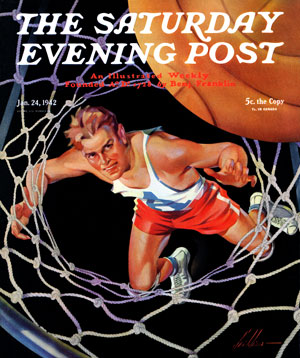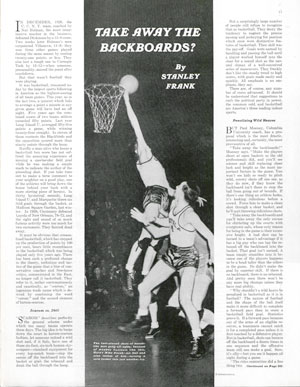News of the Week: Caffeine, Cologne, and Charity Fights
I’d Like to Teach the World to Snack …

You probably don’t consider Coke “healthy.” You probably wouldn’t even call Diet Coke that. But the Coca-Cola Company wants you to, and they’re lining up some heavy-hitters to make it easier for you to think that way.
The company is teaming up with nutrition, dietary, and fitness experts to market the soda as a healthy snack. This marketing includes several articles written for places like American Heart Month and for many food blogs. The company is pushing their mini-cans of Coke as snacks, so it’s not like they’re saying that a Big Gulp is healthy. Still, it seems like it could open the door for others to suddenly say their foods are “healthy” just because of the portion size or because you eat them with a salad.
Besides, I’ve never even considered Coke (or any other soft drink) a “snack.” It’s a drink, a refreshment, a beverage. The word snack should be reserved for things you, well, snack on.
I’m waiting for the inevitable follow-up: “Funyuns: Will They Give You Six-Pack Abs?”
National Caffeine Awareness Month

If you are treating Coke as a snack, please be aware that March is National Caffeine Awareness Month. This is usually where I would link to the official site, but it seems they haven’t renewed their domain name. They probably need more caffeine so they’re more on top of things. Instead, here’s a link to everything you need to know about caffeine, including a chart that lists how much caffeine is in our favorite drinks.
Starbucks Vs. Racism

There seems to be a lot of caffeine-related news this week, but this news might actually solve racism!
Well, okay, maybe not — and it’s probably not supposed to — but Starbucks is trying to do its part to get a conversation started. The coffee shop chain and USA Today have launched a program called Race Together. Today in every Starbucks location, employees are being encouraged to write the hashtag #RaceTogether on the side of each cup. There will also be guides to the program available to customers in each store.
I’d like to know how the busy baristas at Starbucks are going to write something that long on the side of a cup while they’re also collecting customer names for coffee and scone orders. I order something, and “Bob” — not the hardest of names to write — comes out “Qx#b.” Hopefully they’ll write the phrase on all the cups before they open the doors in the morning.
New Cologne Smells Like … Books?

One reason to love print books — and there are many reasons — is because they smell. Older books have that certain smell that will instantly be familiar to anyone whose idea of fun is spending hours roaming the stacks of a used bookstore (like me). And even new print books have a certain smell. You don’t get that with e-books (unless someone comes up with an app that shoots the smell of books at you through the screen as you download something to your Kindle).
But now you can smell like an old book ALL THE TIME. Sweet Tea Apothecary has created Dead Writers, a fragrance that’s a mixture of clove, vanilla, and tobacco. It’s a clever idea, one that could start a new trend of creating colognes and perfumes with funky inspiration, but I don’t know about the name. Couldn’t they have called it Paper or perhaps Library? They already have a few writer-inspired fragrances, including Beatrix (after Beatrix Potter), Lenore (inspired by Edgar Allan Poe’s “The Raven”), and Thoreau. May I suggest Hawthorne or Shakespeare, or maybe even Woolf?
It could go too far though. I don’t even want to know what Bukowski would smell like.
Mitt Romney to Box Evander Holyfield
I know, that sounds like something from The Onion, but it’s true! The former presidential candidate will box former professional guy-who-pummels-other-guys Evander Holyfield in a charity match on May 15 at the Union Pacific Depot in Salt Lake City. Money raised will go to one of the favorite charities of the Romney family, Charity Vision.
Now unless Romney has a hobby no one knows about, Holyfield will knock him out within 7 seconds. But it’s all for charity so I’m guessing Holyfield will go easy on him. This time.
Spring Has Sprung
Hey, today is the official first day of spring! According to the forecasts, we here in Massachusetts have a 90 percent chance of getting up to three inches of snow tomorrow and temps will be below normal, which has been par for the course this winter. But still, today is the official first day of spring! So no matter what the temperature is, put away your shovels and put on those shorts.
March Madness and Me Madness
Other people putting on their shorts will be college basketball players. It’s March Madness time, that special time of year when your favorite CBS television program is interrupted. I have to admit that I don’t like college basketball, nor do I understand the appeal of it. I mean, unless you go to the school, went to the school, or have a child that goes to the school, what is the obsession with filling out brackets and betting money? Do ordinary people — not people who follow college sports religiously — really know enough about college sports to do this? I’m more comfortable filling out these brackets.
But to each his own. I’m going to be rooting for that powerhouse University of Phoenix. They’re in it, right?
National Frozen Food Month
Question: If someone eats four Lean Cuisine meals at one sitting, is it still considered “lean”? Asking for a … well, for me. I’m asking for me.
March is Frozen Food Month, and yes, you could just go out and buy a bunch of frozen dinners and Hot Pockets and salads (yes, they make frozen salads now), but you could also make something at home that uses frozen food as one of the ingredients.
AllRecipes has a large archive of recipes, and so does Eating Well. You can also buy a cookbook by one of my favorite writers, Peg Bracken, the classic I Hate to Cook Book. That has many recipes in it that utilize frozen vegetables and fruit and they’re quite good. As a spokesperson for Birds Eye Foods, Bracken used a lot of the company’s products, of course.
Upcoming Anniversaries and Events
Erik Weisz aka Harry Houdini born (March 24, 1874)
Read about the famed magician and his long battle with phony spiritualists.
Elvis Presley inducted into the Army (March 24, 1958)
Here’s what rock music was like in the days of Dick Clark.
Scott Fitzgerald’s first novel, This Side of Paradise, published (March 26, 1920)
Fitzgerald wrote 68 stories for The Saturday Evening Post. Here is Jeff Glor of CBS This Morning talking to SEP Archives Director Jeff Nilsson about Fitzgerald’s work in the magazine.
Three Mile Island accident occurs (March 28, 1979)
Here’s a detailed explanation of the worst nuclear accident in the United States.
Hey NCAA, Nix Those Backboards!

Ski Weld
January 24, 1942
Every sport has fans who think their game has gone sharply downhill over time. Baseball, football, hockey, even horse racing — whatever their game, they’ll tell you it used to be a lot better. In the old days, the sport was a contest of skill, they’ll say, not luck or brute force. Athletes in those idyllic days were faster, smarter, or nobler. (Sports, of course, aren’t the only things that have degenerated over time. The same is said about movies, restaurants, rock music, gas stations, Cracker Jack prizes, and — while we’re on the subject — people in general.)
But even in the Good Old Days, there were purists who looked further back to the Even Better Old Days.
In 1940 Stanley Frank, for example, complained in The Saturday Evening Post that college basketball was no longer played with skill or intelligence: “The big idea is to barge down the court in harum-scarum fashion, let someone unload a wild shot and, if it fails, have one of those 6-foot, 6-inch human skyscrapers — standard equipment for every top-notch team —… grab the rebound and dunk the ball through the hoop.”
To see how the game should be played, he wrote, you needed to look back 14 years. Back in 1926, basketball was a game of skill. In those days, college teams rarely scored more than 20 points. Now, he sputtered, Long Island U was averaging 55 points a game. Fans couldn’t even keep a box score for a basketball game anymore. While jotting down the last point scored, you’d probably miss another basket. “Comment to your neighbor on a good play [and] one of the athletes will bring down the house behind your back with a more stirring piece of heroics.”
Basketball was becoming too intense, Frank griped on. When Centenary College defeated Loyola of New Orleans, 78 to 72, “the sight and sound of so much furious activity were too much for two customers. They fainted dead away.”
This feverish pace of scoring had to be stopped before the game was ruined. Fortunately, the coach of Columbia University had an idea how it could be done: Take away the backboards.

“Make the players shoot at open baskets as the old professionals did, and you’ll see science and skill replacing sheer luck and height as the most important factors in the game,” said Coach Paul Mooney. “You won’t see kids so ready to pitch wild, screwy shots off one ear, as they do now, if they know the backboard isn’t there to stop the ball from going out of bounds.”
The backboard wasn’t originally meant to play a role in scoring. When Dr. James Naismith invented the game 120 years ago, he simply nailed a peach basket to the edge of a gymnasium balcony. A backboard made of chicken wire was only added to prevent balcony spectators from reaching down and blocking shots. When players saw how easily the wire mesh bent, wooden backboards were introduced. Players soon realized they could bank shots off the solid backboard. Later, fans sitting behind the backboards at Indiana University complained that it blocked their view, and the glass backboard was introduced.
The game had been continually evolving since it was introduced. Nearly every aspect of the sport’s equipment and regulations had been altered since its invention in 1891. And not all fans agreed that the changes had resulted in a better game.
Stanley Frank had several criticisms of 1940 basketball, but he believed removing the backboards would help return basketball to its former glory. Scores would drop to pre-1940 levels, and the game would lose its annoyingly frantic pace. It would be, once again, a game of skill.
What he didn’t recognize is that skill alone probably wouldn’t draw immense crowds to college basketball games. Watchmaking is a skill, but no one’s ever sold tickets to see it.